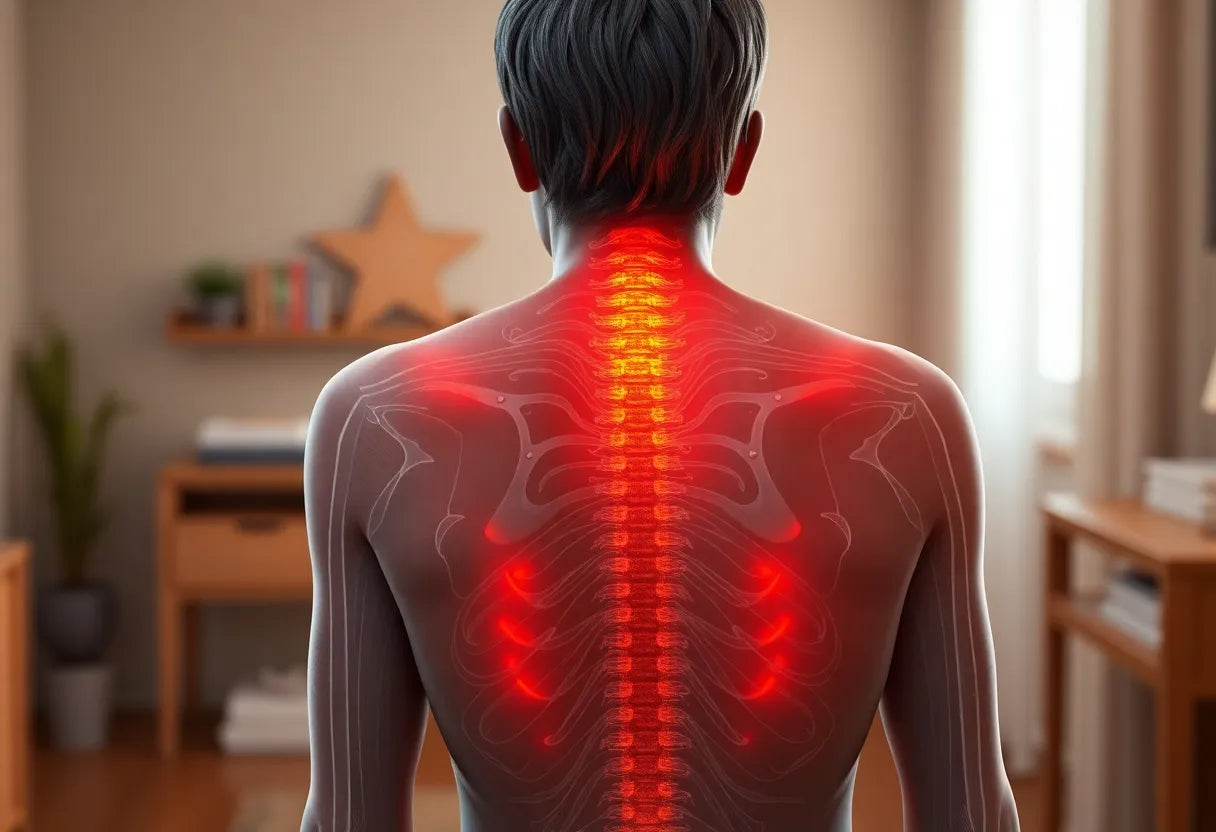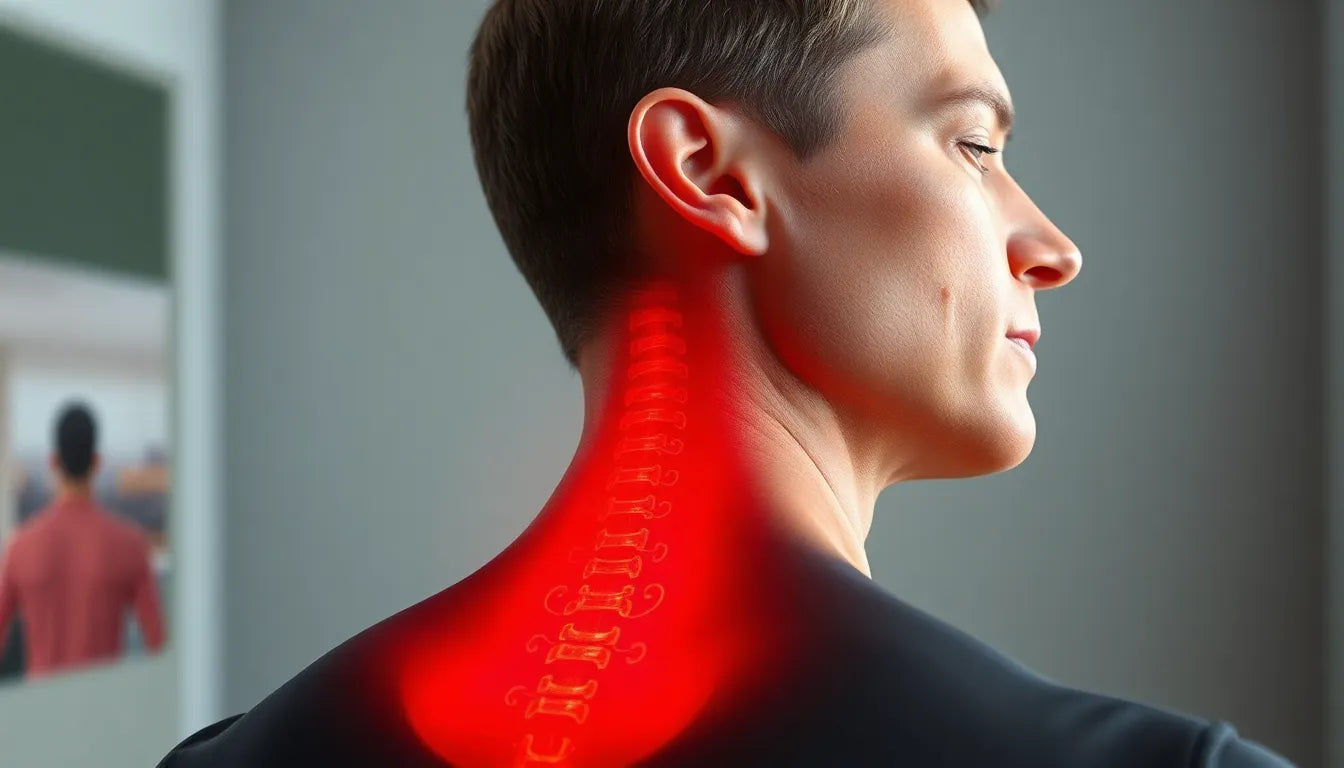Chronic back pain, particularly chronic low back pain, is a pervasive and often debilitating condition that affects millions of people globally. Defined as pain persisting for 3 months or more, chronic back pain can significantly diminish one's quality of life and productivity. Understanding the criteria for chronic back pain is crucial as it guides the development of effective treatment plans and improves overall health outcomes.
Understanding chronic back pain
Chronic back pain (CBP) is a multifaceted condition with a variety of causes and manifestations. It is not just a physical ailment but a complex interaction of physical, psychological, and social factors. This complexity makes CBP challenging to manage, often requiring a comprehensive approach that addresses all contributing elements. For many, the pain leads to physical limitations, emotional distress, and even social isolation, further complicating their daily lives.
Challenges in management
The management of chronic back pain presents numerous challenges due to its multifactorial nature. Patients often experience a wide range of symptoms that can vary in intensity and duration. This variability necessitates a tailored approach to treatment, one that considers the unique needs and circumstances of each individual. Moreover, chronic back pain can lead to significant emotional and psychological strain, necessitating interventions that address these aspects as well.

Lumbar support belt
Provides stabilisation and adjustable relief for lower back pain during daily activities.
Despite these challenges, advances in understanding and treating chronic back pain offer hope for those affected. By exploring modern approaches and evidence-based strategies, individuals can find effective ways to manage their pain and enhance their quality of life. This blog post aims to delve into these contemporary methods, highlighting patient-focused interventions and the importance of a comprehensive management strategy.
Purpose of the post
The purpose of this post is to explore the modern approaches to managing chronic back pain effectively. It will delve into evidence-based strategies and patient-focused interventions that have shown promise in alleviating symptoms and improving the lives of those affected by chronic back pain. By understanding these strategies, patients and healthcare providers can work together to unlock relief and transform the management of chronic back pain, paving the way for better health outcomes and enhanced quality of life.
clinical definitions and criteria for chronic back pain
The clinical definition of chronic back pain (CBP) can vary significantly across different studies and medical practices, which underscores the importance of standardized criteria in diagnosis and treatment. Typically, CBP is characterized by pain lasting three months or more, but the specifics can differ based on the frequency of pain episodes and whether a healthcare provider's diagnosis is required. This variability can impact treatment recommendations and ultimately affect health outcomes. A standardized approach can help ensure that patients receive consistent and effective care, facilitating better treatment planning and improved patient outcomes.
evidence-based interventions for managing chronic back pain
Modern management of chronic back pain increasingly relies on evidence-based interventions. Among these, duloxetine, a serotonin-norepinephrine reuptake inhibitor, has shown promise for certain patients, particularly in managing the neuropathic component of pain. Additionally, acceptance and commitment therapy (ACT) offers a psychological approach that encourages patients to accept their pain while committing to actions that improve their quality of life, focusing on mindfulness and cognitive flexibility.
Physical interventions also play a crucial role. Classification-based exercise and manual therapy are tailored to the individual's specific needs, addressing physical dysfunctions and promoting movement. These exercises are often part of a broader self-management program that empowers patients to take an active role in their care, fostering independence and improving long-term outcomes.
multidisciplinary and value-based care
Adopting a multidisciplinary approach in chronic back pain management can lead to significant improvements in patient outcomes. This model involves coordinated care from various healthcare professionals, including neurosurgeons, pain therapists, and physiotherapists. Such collaboration not only enhances the efficiency of care delivery but also reduces diagnostic times and healthcare costs. Studies have shown that this approach can lead to excellent or partial pain resolution in over 65% of patients, highlighting the benefits of integrated care models.
non-pharmacologic and noninvasive therapies
Non-pharmacologic and noninvasive therapies are foundational in managing chronic back pain. Leading health organizations, such as the Mayo Clinic and the Centers for Disease Control and Prevention (CDC), recommend these therapies as first-line treatments. Exercise, physical therapy, and cognitive-behavioral therapy are commonly advised to improve physical function and address the psychological aspects of pain. These interventions are preferred over pharmacologic options, which are considered only after the least invasive methods have been attempted.
Emerging procedures, such as basivertebral nerve ablation, offer new avenues for treatment in select cases. These minimally invasive techniques target specific pain pathways, providing relief for patients who do not respond to traditional therapies. While promising, these procedures are typically reserved for patients with specific indications, ensuring that they receive the most appropriate and effective care.
Overall, the management of chronic back pain requires a comprehensive approach that integrates clinical definitions, evidence-based interventions, and multidisciplinary care. By prioritizing non-pharmacologic and noninvasive therapies, healthcare providers can offer patients a path to relief that minimizes risks and maximizes outcomes.
Empowering patients through supported self-management
Supported self-management is a cornerstone in the journey to managing chronic back pain effectively. It emphasizes empowering patients to take control of their health through active engagement, lifestyle modifications, and mental health support. Patients are encouraged to participate actively in their care, fostering a sense of autonomy and resilience. Healthcare professionals play a crucial role in this process by providing guidance, resources, and encouragement, helping patients navigate the complexities of chronic pain management.
Key elements of successful self-management include regular physical activity tailored to the individual's capabilities, nutritional adjustments that support overall health, and stress-reducing techniques such as mindfulness or meditation. Social support, whether from family, friends, or support groups, also plays a vital role in maintaining motivation and adherence to management plans. By fostering an effective alliance between patients and healthcare providers, self-management strategies can lead to improved outcomes and a better quality of life.
Exploring other approaches and patient-focused strategies
Chronic back pain management often benefits from a multimodal approach that combines various treatment strategies. Patients are encouraged to explore a range of modalities, including medications, movement therapies, mental health interventions, and alternative therapies such as acupuncture or yoga. This holistic approach aims to address the diverse factors contributing to pain, offering a comprehensive solution tailored to each patient's unique needs.
Encouraging patients to remain open to different treatment options can lead to more effective pain management. For instance, integrating movement-based therapies with cognitive-behavioral techniques can help address both physical and psychological aspects of pain. Similarly, incorporating ergonomic aids and lifestyle adjustments can further enhance treatment outcomes, demonstrating the importance of a personalized and adaptable approach to chronic back pain management.

Men's Posture Shirt™ - Black
Patented shirt designed to activate muscles, relieve tension, and support posture for work or leisure.
Comparison of noninvasive treatments
When considering noninvasive treatments for chronic back pain, it's essential to understand the pros and cons of each option to determine the best fit for individual patient profiles. Here's a comparison of three common noninvasive therapies:
- Exercise: Regular physical activity is crucial for maintaining mobility and reducing pain. It is generally suitable for most patients, with the main advantage being improved muscle strength and flexibility. However, it requires consistent effort and may need to be adapted for those with severe pain or mobility issues.
- Physical Therapy: This involves guided exercises and manual techniques performed by a trained therapist. Physical therapy can be highly effective for addressing specific physical dysfunctions but may require frequent sessions, which can be a logistical challenge for some patients.
- Cognitive-Behavioral Therapy (CBT): CBT focuses on altering negative thought patterns and behaviors associated with chronic pain. It is particularly beneficial for patients experiencing emotional distress due to pain. The downside is that it requires commitment to regular sessions and may not address physical symptoms directly.
Frequently Asked Questions
What are the most effective treatments for chronic back pain?
The most effective treatments often involve a combination of noninvasive therapies such as exercise, physical therapy, and cognitive-behavioral therapy. These approaches address both physical and psychological aspects of pain, providing a holistic management strategy.
How can lifestyle changes impact chronic back pain management?
Lifestyle changes, including regular physical activity, a balanced diet, and stress management techniques, can significantly impact chronic back pain management. These changes help improve overall health, reduce pain levels, and enhance quality of life.
Are there any new interventions for chronic back pain?
Emerging interventions, such as basivertebral nerve ablation, offer new treatment options for select patients. These minimally invasive procedures target specific pain pathways and can provide relief for those who do not respond to traditional therapies.
How do ergonomic aids fit into pain management strategies?
Ergonomic aids, such as supportive chairs, mattresses, and standing desks, play a crucial role in reducing strain on the back and promoting proper posture. These aids can help prevent exacerbation of pain and support overall management strategies.
What role does mental health play in managing chronic back pain?
Mental health is integral to managing chronic back pain, as emotional distress can exacerbate physical symptoms. Psychological therapies like cognitive-behavioral therapy and mindfulness practices can help patients develop coping strategies and improve their quality of life.
Källor
- American College of Physicians. (2017). "Guideline for Treating Nonradicular Low Back Pain."
- Qaseem, A., et al. (2017). "Noninvasive Treatments for Acute, Subacute, and Chronic Low Back Pain: A Clinical Practice Guideline From the American College of Physicians." Annals of Internal Medicine.
- Chou, R., et al. (2023). "Management of Low Back Pain: A Review." JAMA.
- North American Spine Society. (2020). "Evidence-Based Clinical Guidelines for Multidisciplinary Spine Care: Diagnosis and Treatment of Low Back Pain."
- American Academy of Family Physicians. (2021). "Clinical Recommendations: Back Pain."
- George, S.Z., et al. (2021). "Clinical Practice Guidelines for Physical Therapy Management of Patients With Chronic Low Back Pain." Journal of Orthopaedic & Sports Physical Therapy.
- U.S. Department of Veterans Affairs. (2022). "VA/DoD Clinical Practice Guideline for Diagnosis and Treatment of Low Back Pain."
- World Health Organization. (2023). "WHO Releases Guidelines on Chronic Low Back Pain."
- Centers for Disease Control and Prevention. (2022). "CDC Guideline for Prescribing Opioids for Chronic Pain."
- Smith, J.A., et al. (2022). "Emerging Interventions for Chronic Low Back Pain." Journal of Pain Research.
- College of Family Physicians of Canada. (2019). "Guidelines for the Diagnosis and Management of Low Back Pain in Primary Care."























